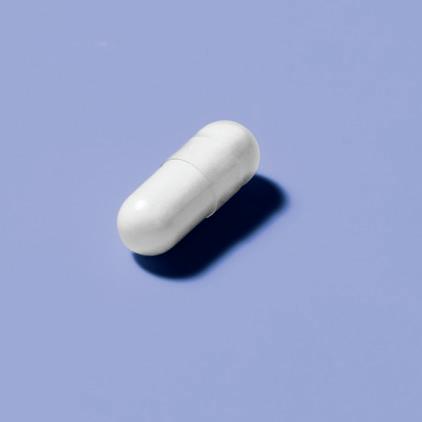






Contributors
Billy Thomas VP Account Management
Nina Bandali, PharmD
Senior Principal, Value & Access, State Public Sector
Mina Kwon, PharmD
Senior Principal, Value & Access, State Public Sector
Kristin Haas
Lead Health Informatics Analyst
Shelae Cheng Principal, Brand Marketing Strategy
External contributor
Doug Brown, RPh, MBA Senior Vice President, Value and Access Red Nucleus
Prime Therapeutics
thanks you for supporting the annual Medicaid Pharmacy Trend Report™ (MTR), now in its 10th edition.
A decade ago, we set out to demystify the Medicaid program’s pharmacy economics by explaining how three key elements of the federal rebate ensured that Medicaid received discounts equal to or better than those given to the most efficient nongovernment purchasers.
From its inception, the MTR has highlighted the drivers of both gross and net cost, the classes and the individual drugs driving trend, and the impact of both federal and supplemental rebates on the net cost of drugs in the Fee-for-Service Medicaid Program. Past reports outlined key legislative updates to the program, including changes to how the average manufacturer price (AMP)
is calculated for authorized generic drugs. They also highlighted emerging market trends, such as value-based contracting, and examined critical challenges facing state Medicaid programs — notably, the cost associated with hepatitis C treatment.
In this year’s report, we look back on the last 10 years of Medicaid pharmacy economics, providing data-based graphs that illustrate where the program has been and where it’s likely headed next year.
This year’s report also highlights the dramatic decline in the average federal rebate and its likely causes. Unfortunately for states, this decline directly correlates to the highest net
cost per claim increase we’ve seen in the past 10 years.
As in previous issues, we continue to focus on the brand, generic, specialty and traditional drugs shaping Medicaid trend. This analysis explores their impacts on the federal rebate and links these dynamics to the significant decline in average federal rebate and its underlying causes. Additionally, we highlight the top 50 drugs by percent of total net spend and examine the top 10 drugs and therapeutic classes driving the overall net trend.
We hope you enjoy the 10th edition of the MTR.
In 2024, gross cost per claim rose 4.2% ($6.86), while net cost per claim rose 13.6% ($9.78). This year-overyear increase in net cost per claim was substantially higher than last year’s trend of 3.3% ($5.16) and 6.9% ($4.51) for gross and net spend, respectively.
The data suggests the calculations embedded within the manufacturers’ federal rebate may be the primary contributor to the continued and accelerating increase in Medicaid net spend. The likely root cause is a combination of AMP cap repeal and the inflation-related penalty component of the federal rebate. (See more details on Page 9.)
Top 5 classes by net spend Figure 5
In 2024, the top five Medicaid drug classes remained identical to those seen in previous years. The top two drug classes, HIV/AIDS and antipsychotics, accounted for 15.8% of the total net drug spend, down from 17.4% or 1.68 percentage points from the year before. Note that the top five classes accounted for almost 40% of total net spend.
Specialty claims volume increased from 1.4% to 1.5% in 2024 — the second increase in as many years after holding steady at 1.3% from 2019 to 2022. The total net cost associated with specialty drugs as a percentage of total net spend decreased for the first time since 2018 (by 0.3 percentage points).
Claims volume Figure 6
Antipsychotics
HIV/AIDS
Cytokine and CAM antagonists
Hemophilia treatments
Anticonvulsants
All other
*See Page 11 for top 50 drug classes by net spend.
Total net cost Figure 7
Preferred Drug List (PDL) program success should not be evaluated solely on supplemental rebate dollars, as doing so risks driving a higher net cost per claim.
Net drug cost is calculated net of federal, supplemental and the rebate offset amount.
Brand drugs can be less expensive than their generic equivalents and can save states millions of dollars annually.
Federal rebates and net cost per claim have an inverse relationship. Declining federal rebates drive higher net cost for states.
Medicaid’s pharmacy pricing principles have remained largely unchanged throughout the 10 years Prime Therapeutics has produced this report. Manufacturers sign the National Drug Rebate Agreement with the Centers for Medicare & Medicaid Services (CMS) to participate in the Medicaid Drug Rebate Program, where they agree to pay a mandatory, or “federal,” rebate in exchange for required pharmacy coverage with or without utilization management or prior authorization. All states and the District of Columbia currently offer this benefit to Medicaid beneficiaries. As a result, all manufacturers’ products are covered through this agreement with CMS.
Medicaid rules also permit states to contract for additional, or “supplemental,” rebates by individual states or a group of states to further reduce the net cost of pharmaceuticals. These contracts are exempt from Medicaid’s best price, which means these rebates do not impact the manufacturer’s Medicaid rebate calculation. Both the mandated and supplemental rebates, which are collected by the states, are shared with the federal government according to their Federal Medicaid Assistance Percentage rate.
Beyond the mandatory rebate and best price, two other calculations impact the total rebate amount paid quarterly by manufacturers: the rebate offset amount (ROA) and Consumer Price Index for All Urban Consumers (CPIU) penalty. The ROA is that part of the federal rebate that goes entirely to the federal government. It constitutes a small portion of the total rebate (roughly 3.3% of total drug spend in 2024).
In 2024, the average total discount inclusive of ROA was 52.4% (44.0% federal and 8.4% supplemental). The CPI-U penalty is added to the rebate calculation to mitigate price increases on states. If a manufacturer raises their price faster than the rate of inflation, that increase beyond CPI-U is added to the calculated federal rebate due; the opposite is also true. As we’ve noted in the past, inflation has likely been the key factor driving federal rates down over the past several years. Inflation, which spiked at 7% in 2021 and 6.5% in 2022, has continued to decline, but it remains above recent historical averages (see Figure 9). As this year’s data demonstrates, lower federal rebates directly correlate to increased net cost per claim. Supplemental rebates mitigate those increases, but those rebates are generally limited to preferred drugs on a state preferred drug list.
To understand Medicaid economics at the drug level, assume pharmacy reimbursement, wholesale acquisition cost (WAC) and AMP are all the same. A new brand drug enters the market with a minimum mandatory rebate of 23.1% of AMP. This drug enters a competitive class with three clinically equivalent therapeutic alternatives, each with higher discounts and lower net costs than the new drug. With a pharmacy reimbursement cost of $100, the net cost to the state is $76.90 ($100 minus 23.1%, or $23.10).
To be competitive, the manufacturer of the new brand will offer an additional discount, known in Medicaid as a supplemental rebate, to lower the net cost from $76.90 to a competitive price of $50. The value of the supplemental rebate at time zero is thus equal to $26.90 and the total discount is 50%, or $50. As time progresses, manufacturer pricing actions drive the total discounts up. Still, due to the inverse relationship between supplemental and federal rebates, supplemental discounts decline over time as the total federal discount increases (see Figure 8).
As the patent expiration approaches, the manufacturer generally increases the cost of the drug, and the CPI-U penalty accelerates the growth of the federal rebate in the quarters just prior to that event.
Commercial plans generally welcome the launch of a new generic drug due to lower reimbursement and overall drug costs. For Medicaid, however, states typically delay preferring the generic until after the six-month exclusivity period has ended and multiple generics have entered the market. The CPI-U penalty for generic drugs is tied to the AMP price in the fifth full quarter after initial competition drives prices down. Initially, generics enter the market at a discounted price compared to the brand’s
full WAC and have a federal rebate of 13% of AMP. A brand drug’s net cost can be significantly lower than that of the generic during this period. When the generic’s net cost becomes lower than the brand’s, the state will prefer the generic and accrue additional savings.
This nuance underscores the importance of considering net costs, since brands with high federal rebates can be more cost-effective than generic drugs in certain cases.
In 2024, states included in this report saved $325M preferring brand-over-generic equivalent — roughly 25% less than in 2023, when states saved $440M in this program. The states’ top five brand-over-generic drugs were Symbicort, Spiriva, Suboxone, Farxiga and Vyvanse, which accounted for 57.4% of total brand-over-generic savings last year.
2024 brought the most significant federal rebate change we’ve seen in the MTR’s 10-year history. Federal rebates declined 4.7 percentage points in the aggregate inclusive of the rebate offset amount (ROA), from 48.7% in 2023 to 44.0% in 2024.
However, the real story this year is the 5.1 and 5.6 percentage point decrease in branded, traditional drugs (Figure 11), which drove the average federal rebate (net of ROA) down 4.7 percentage points to 44.0% this year — its lowest level in the past decade.
This anomalous decline in the federal rebate — more than double and almost triple the declines seen at any point in the last 10 years — can primarily be attributed to the AMP cap repeal effective Jan. 1, 2024, (see Page 9) and reductions in CPIU penalty due to continued inflation above recent historical trends (see Figure 9).
The decline in federal rebates continues a trend we identified six years ago after several years of increasing federal rebates, which peaked at 55.3% in 2018 Specialty drugs, which declined 1.8 percentage points from 38.7% to 36.9%, continued to push the average federal rebate lower. Bearing in mind that new market drugs start with a federal rebate of 23.1% of AMP, the higher utilization of newer products is likely weighing down the average specialty component of the federal rebate.
Supplemental rebates, a counterweight to declining federal rebates, increased to 8.4% of total net spend, up from 7.5% last year — the highest supplemental rebate percentage ever reported in this publication. Unfortunately, not all drugs have supplemental rebates to protect states’ net cost when federal rebates decline. This occurs because supplemental rebates have an inverse relationship to federal rebates when contracted under a guaranteed net unit price, which is typical for Medicaid.
While federal rebate policy changes have significantly impacted overall net spend, newer traditional brand drugs with low federal rebates and high utilization have also contributed to the increase. Traditional classes that drove net spend in 2024 include weight management agents; antivirals, general; glucocorticoids, inhaled; hypoglycemics, insulin and related agents; and several others as noted by the rank change in the top 50 drug classes by net spend (Figure 20).
Under these agreements, when federal rebates decline, supplemental rebates increase in an equal fashion (the opposite is also true). Supplemental rebates are collected on top of the mandatory federal rebate. This year, the total Medicaid rebate (federal, supplemental and ROA) was 52.3%, which, unfortunately for states, is 3.9 percentage points lower than the previous year. Annual
Average change in federal rebate per claim, net of ROA, over the period was -$4.84, a -$374.6M loss in federal rebate for the 22 states included in this report. This loss in federal rebate was slightly offset by a $1.92 per claim increase in supplemental rebate per claim equal to $148.9M.
Federal rebate percentage by segment Figure 10
The average federal rebate can be subdivided into either specialty and traditional drugs or brand and generic drugs.
*Federal rebate as a percentage of pharmacy reimbursement and net of ROA.
Percentage point change in federal rebate (net of ROA), 2023 vs. 2024 Figure 11
In contrast to prior years, the primary drivers of the decrease in the federal rebate were traditional and brand-name drugs, not specialty drugs.
Significant change from last year
As noted in Figure 6, specialty claim volume increased by just 0.1% percentage point but accounted for 37.8% of total federal rebates in 2024, an increase of 3.6 percentage points from 34.2% in 2023. Total supplemental rebates derived from both traditional and specialty drugs saw little change year over year. The
A historical look at the federal rebate trend
In the chart to the right, we show the federal rebate, net of ROA, for all 10 years of the MTR. We also calculate the yearly percentage point change from the previous year to highlight the dramatic changes seen in 2024. Again, based on the data, we believe the AMP cap repeal and, to a lesser degree, continued inflation are the primary drivers of lower federal rebates.
In an analysis of the federal rebate with and without the 2024 federal rebate, the projected difference in 2025 is 2.39 percentage points, or between approximately 43.8% and 41.5%. Given that the market share impact of the AMP cap repeal will continue through 2025 and inflation will continue to moderate, expect the 2025 federal rebate to be closer to 43% than 42%.
Medicaid federal rebate trend Figure 14
Established under the Affordable Care Act, when the Medicaid minimum rebate percentage increased from 15.1% to 23.1% of AMP for most brands and from 11% to 13% of AMP for generics, the Medicaid rebate was capped at 100% of AMP to prevent manufacturers from paying more in Medicaid rebate than the sale price of their drug.
In 2019, the Congressional Budget Office estimated the rebate cap removal would save $15.9 billion over a 10-year period. On Jan. 1, 2024, as a part of the American Rescue Plan Act of 2021, the Medicaid rebate cap was eliminated under the prospect of increasing Medicaid rebates and slowing manufacturers’ year-over-year price increases.
For most brand drugs, the federal rebate calculation is:
• Greater of (23.1% of AMP or AMP minus best price) plus an inflation penalty tied to the Consumer Price Index for All Urban Consumers (CPI-U).
Manufacturers can pull several levers to reduce their federal rebate obligation and avoid exceeding 100% of AMP. They can lower their AMP to reduce their minimum rebate, which in turn will reduce the impact of the CPI-U penalty. They can also reduce or eliminate discounts offered to commercial payers or other applicable entities, which will reduce or eliminate the impact of best-price policies.
In 2024, evidence suggests that manufacturers took a variety of approaches, including one or a combination of the following:
• Lowering their AMP price
• Reducing their commercial discounts
• Paying the uncapped rebate
• Divesting their product
• Discontinuing their drug
The end of the Medicaid rebate cap was most relevant to drugs that had significant price increases over time with substantial inflationary penalties. These include many older branded agents which, net of federal rebate, were very low cost or even free to states. Many states took advantage of these massive discounts in their brand-over-generic programs, the results of which have been published in this report on an annual basis.
Examples of the impact of AMP cap repeal on the 13.6% net cost trend, or $9.78 increase in overall net cost per claim, in 2024 include:
• Stimulants and related agents drove the net cost per claim up by $1.43, or $101M, when the federal rebate declined on two high-volume brands, substantially driving up their net price and forcing states to use more costly generics.
• Glucocorticoids, inhaled increased $1.02 per claim, or $78M, in net spend, partly due to lowered federal rebates attributed to AMP reductions on marketleading drugs, which drove higher net prices for states. Additionally, the discontinuation of Flovent HFA (obsolete on Dec. 12, 2023) and subsequent conversion to its authorized generic resulted in higher net costs for states.
• The hypoglycemics, insulin and related agents class was impacted by significant price reductions on insulin products, which lowered federal rebates and drove up net cost by $0.90 per claim, or $71M.
In the past, we’ve highlighted specialty drug classes that had the largest impact on net trend, both positive and negative. For many years, the cytokine and CAM antagonists class had the greatest impact on trend ($1.06 LY). In 2024, stimulants and related agents, a traditional class, had the largest impact on net trend ($1.43) and was a key driver of overall net spend growth. The hypoglycemics, SGLT2 class replaced hemophilia treatments from 2023 as the class that had the largest mitigating impact (-$0.48) on the trend.
The top 10 specialty drugs account for almost 20% of total net drug spend, and traditional drugs account for just over 10%. Together these 20 drugs account for 30% of total net drug spend. From a net trend perspective, these 20 drugs account for $3.30 of the $9.79 net trend increase we saw in this report.
2024 top 10 specialty drugs by percentage of net spend Figure 17
Top 10 specialty drugs increasing drug trend Figure 22
As highlighted throughout this report, several traditional drug classes experienced dramatic increases in total net spend in 2024 compared to 2023. Several of the classes driving net spend experienced dramatic growth in total net spend and broke into the top 50 drug classes for the first time (Figure 19). Notably, the glucocorticoids, inhaled class rose from No. 61 to No. 16 (primarily due to Flovent HFA’s discontinuation, which shifted utilization to the more expensive generic), and hypoglycemics, insulin and related agents rose from No. 121 to No. 32. Moves in these classes were likely tied to the AMP cap repeal and its impact on federal rebates.
Not all classes experienced growth due to net cost changes. Weight management agents experienced a 136% growth in claims volume. Coupled with a 25.9% increase in net cost per claim, the change in total net spend was close to 200%.
The Prime Therapeutics Medicaid Pharmacy Trend Report focuses exclusively on Medicaid Fee-For-Service (FFS) drug spend for Prime Therapeutics customers (highlighted in purple below) and does not include managed care utilization. It provides a comprehensive year-over-year analysis of Medicaid FFS pharmacy claims data on a cost-per-claim basis.
•The report trends are based on gross cost and net cost-per-claim basis and compared the 2023 calendar-year data to the 2024 calendar-year data.
•The dataset used in this evaluation contains more than 77 4 million claims with a gross cost of $13.3 billion and a net cost of $6.3 billion.
•Data was obtained from 22 Medicaid FFS clients across the country from which two years of complete FFS data are available. Claims data used in this report is publicly available on the CMS website.
• To achieve the highest level of accuracy for the Medicaid FFS space, this report again incorporates the CMS federal rebate data for both 2023 and 2024. Federal rebate data at the drug level is confidential and protected by federal law under the Social Security Act at 42 U.S.C. 1396r-8 (b)(3)(d). Therefore, this report does not disclose net cost pricing information on a per-drug basis.
Prime Therapeutics customer data used in analysis
